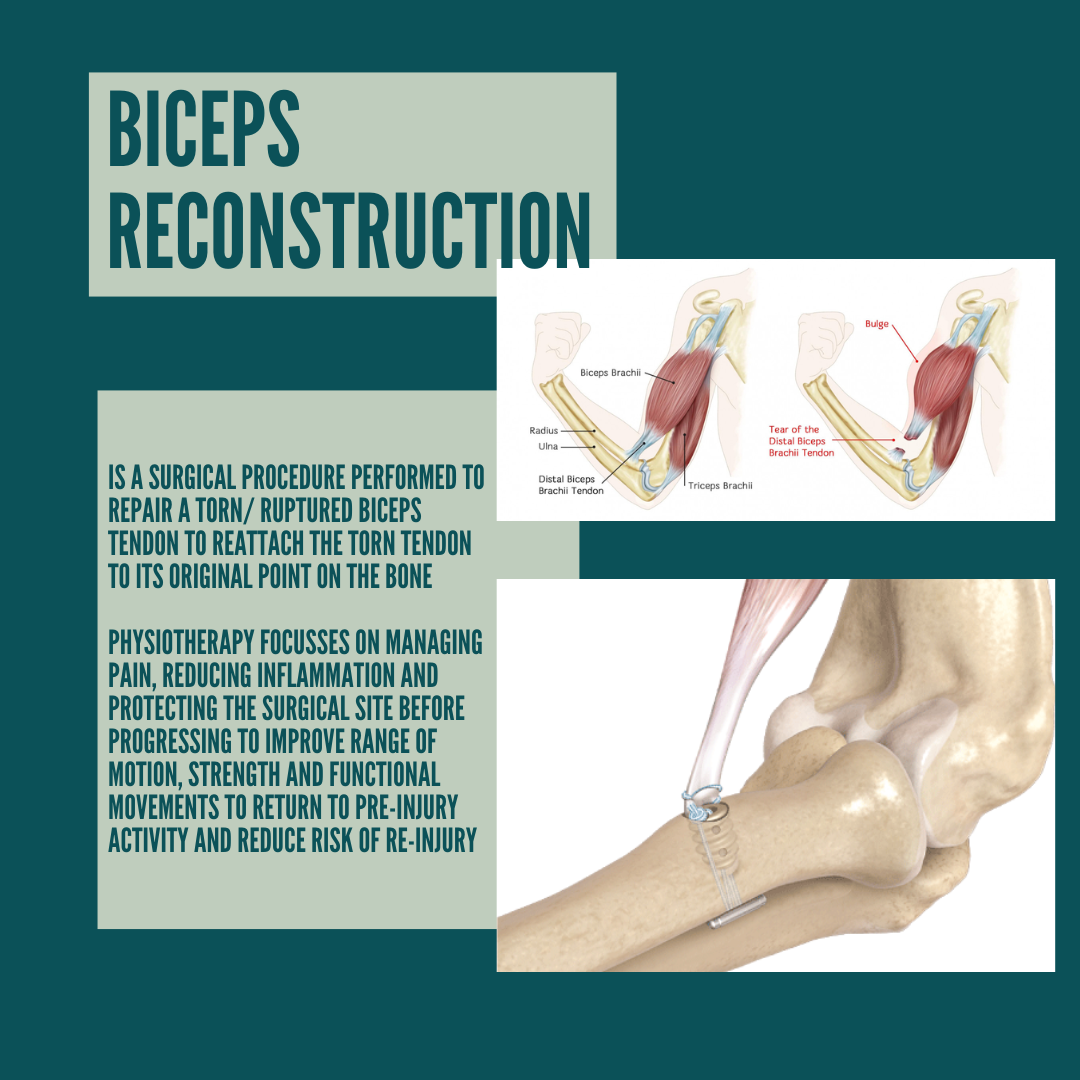Biceps Reconstruction
Introduction
Biceps tendon reconstruction is a surgical procedure performed to repair a torn or ruptured biceps tendon, typically the long head of the biceps. This injury often occurs due to repetitive overhead movements, heavy lifting, or sudden forceful actions. The biceps tendon plays a crucial role in elbow flexion and shoulder stability, so its injury can result in pain, weakness, and limited function.
During biceps tendon reconstruction, the surgeon may use various techniques to repair the torn tendon, including reattachment to its original insertion point on the bone or transferring another tendon to replace the damaged one.
Physiotherapy Rehabilitation
Physiotherapy is essential in the rehabilitation process following biceps tendon reconstruction. The physiotherapist's role begins immediately after surgery and continues through the recovery period to maximise outcomes and restore function.
In the early stages, physiotherapy focuses on managing pain, reducing inflammation, and protecting the surgical site. Gentle range of motion exercises are introduced to prevent stiffness and maintain joint mobility while ensuring that the repaired tendon heals properly.
As healing progresses, progressive strengthening exercises targeting the biceps muscle and surrounding musculature are commenced. These exercises help rebuild muscle strength and endurance, restore functional movement patterns, and improve overall shoulder stability.
Physiotherapists also provides guidance on proper movement mechanics and posture to prevent re-injury and allow greatest long-term outcomes. Manual therapy techniques such as soft tissue massage, dry needling and joint mobilisations to address any residual stiffness or muscle imbalances.
Conclusion
Throughout the rehabilitation process, the physiotherapist works closely with both surgeons and patients to monitor the patient's progress, adjust the treatment plan as needed, and provide education and support to facilitate a safe and successful recovery. By adhering to the prescribed physiotherapy program, patients can regain strength, mobility, and function following biceps tendon reconstruction, ultimately returning to their normal activities with improved shoulder function and reduced risk of future injury.
